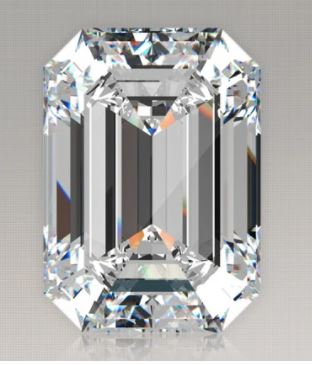
Lab Grown?
By now we have all heard about “Lab-grown” diamonds, but we may not all know what they really are. I mean how do you “grow” a diamond anyway? Is it like planting little diamond seeds under a big rock that you jump up and down on it until it sprouts diamond shoots? Are they some synthetic recipe whipped up in a test tube? Why would anyone ever want a Lab Grown Diamond when they can have a Natural one? Well, you may be in luck because today you are going to get the inside skinny on what these things really are and if they are right for you.
Full disclosure, we do not own a diamond mine, nor do we have any association with any lab that is growing diamonds. Also, we are not gemologists. But as a State-of-California licensed reseller (#1739), we have to know a thing or two about diamonds because we tend to bump into them from time to time as part of the estates we purchase.
Let’s start with what they are not. A Lab Diamond is not the same as a Cubic Zirconium, or Moissanite. These are the most common “diamond substitutes” out there today, and what people still mistakenly reference when they hear “Lab-Grown diamonds.” It’s important to point out that Cubic or Mossinite are not “fake” diamonds, they are things that are real and that look like diamonds even though they are very chemically and structurally different than natural diamonds. The biggest difference is in hardness. Diamonds are the hardest natural material the earth has ever produced. It is that hardness that makes their use in industry so valuable (think diamond infused saw blades). These are just another way to make clear sparkly things we can put into jewelry but are not anywhere near chemically the same as diamonds.
Cubic zirconia crystals are made by mixing powdered zirconium and zirconium dioxide together and heating them up to 4,982ºF. Cubic zirconia is a human-made flawless stone that is free of inclusions. Moissanites are made of pure silicon carbide (Silicon and Carbon) and are extremely rare in nature. But why go through the trouble of finding them in nature when you can cook them up relatively quickly by baking the Silicon Carbide until it crystallizes? Answer: You wouldn’t.
Natural diamonds are pure Carbon. A single element, that with enough heat, time and pressure crystalizes into the beautiful shiny objects we all have grown to love. A real diamond will burn very much like a piece of charcoal. (Disclaimer: Do not try it with your wife’s wedding ring.) They may have small inclusions (foreign material that got trapped in the crystal as it was formed), and as such many of the higher quality pieces actually get a lot of their value from having less of these inclusions. This is important because most natural diamonds do have inclusions, with the handfuls that are inclusion-free tending to be more of investment-grade pieces.
A “Lab Grown” diamond is pure carbon. It burns just like a natural diamond, it is as hard as a natural diamond, it looks like a natural diamond, it’s the same atomic weight as a natural diamond, and it is chemically identical to natural diamonds. Let me say that again. Lab Grown diamonds are chemically identical to natural diamonds. They are made from the exact same stuff as natural diamonds are.
What is different with a lab-grown diamond is that it is produced using a lot of heat and pressure (just like a natural diamond) except that heat and pressure is applied in a controlled laboratory and not some diamond kimberlite pipe sprouting up from the center of the earth. The real difference is time. Lab-grown diamonds are grown in weeks instead of millions of years like natural diamonds. The process is very similar but just accelerated, and because the diamonds are grown in a controlled environment, there are none of those pesky impurities that make those natural inclusions. In other words, they all come out nearly perfect.
I have never met anyone who can with a loop tell the difference between a lab-grown diamond and a natural diamond. I have heard a lot of people say they can, but never have I seen them do so consistently. It is just not possible with the naked eye to tell the difference. In fact, the most tell-tale sign is that Lab Grown diamonds have no inclusions. It’s almost like you have to think, “wait this diamond looks too perfect, so it has to be lab-grown”. In order to tell the difference between the 2 types requires an $8,000 diamond scanner that is only right most of the time.
So to put this in perspective it means that you can buy a 2 Carat Diamond that by today's grading standards would be considered flawless, be in D (or better) in Color, that flashes like the sun, and looks just like the highest quality Natural Diamond. All this at prices 20-40% less than natural diamonds. The value proposition is so high with Lab-grown diamonds, (even if you leave out the environmental costs for diamond mining), that one must wonder why anyone would want natural diamonds anymore? Nostalgia?
